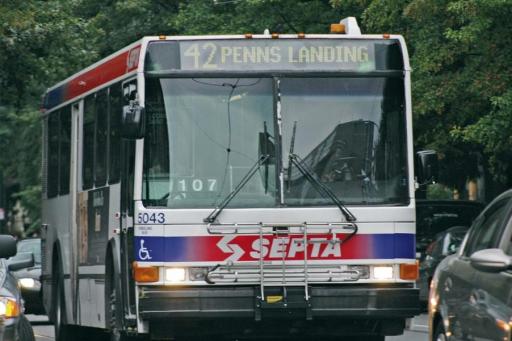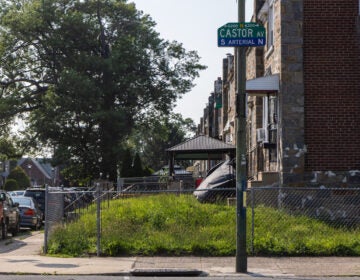Septa gets real on time

Aug. 5
By Anthony Campisi
For PlanPhilly
SEPTA is getting ready to unveil a new system that will provide bus riders with real-time information about when to expect the next bus to arrive at their stop.
Though the authority is wary of discussing the new project on the record before an official announcement — which SEPTA spokesman Andrew Busch said to expect “in the not-too-distant future” — such a service would allow SEPTA to catch up with other large transit agencies that say real-time information has become crucial for their riders.
The new system will rely heavily on an Internet application that riders will be able to access on handheld PDAs and Internet-enabled cellular phones, Busch said.
“It may be something that’s used in conjunction with Google Maps applications,” he added, referring to SEPTA’s new partnership with Google Transit.
SEPTA provides information about bus detours on its website (http://www2.septa.org/detours/ ), but it currently has no way of telling riders when to expect buses to arrive at specific stops.
The new system is part of SEPTA’s broader customer-service effort to provide more real-time data to riders, which began in earnest when the authority began posting real-time updates of regional rail trains on its TrainView application (http://trainview.septa.org/ ). The authority also posts service interruptions on its Twitter feed (http://twitter.com/septa ).
SEPTA has also previously announced plans to release a new system called Next To Arrive, a website that will let users check when the next train will arrive at any given regional rail station.
With these moves, SEPTA is joining other major transit agencies throughout the country, which have focused on providing riders with an increasing amount of real-time information.
“It’s really one of the most important customer-service features we’ve seen in the last decade,” said Judson True, a spokesman for the San Francisco Municipal Railway.
The SEPTA system will differ from ones already in use in several ways, however.
SEPTA is developing the system mostly with in-house talent, eschewing companies like NextBus, which has developed systems for San Francisco and Washington, D.C., and is in the process of building a system for Toronto.
And unlike agencies like the San Francisco Muni, which displays real-time bus information on LED displays at more than half of its 1,100 bus shelters, SEPTA has been focusing this and other customer-service efforts on Web-based products.
While this will force riders to go through an additional step to find out when their next bus will arrive, the approach will save SEPTA money that would have gone to installing displays at shelters and in hooking those displays up to the power grid, a process that is “very capital-intensive,” according to Wayne Watanabe of the King County Metro system in Seattle, which operates a real-time bus information system.
Watanabe explained that the displays have to be “hardened” against vandalism and bad weather and can cost anywhere from $5,000 to $10,000 a piece.
Web- and phone-based applications seem to be the wave of the future.
TriMet, the public transit agency for Portland, Ore., provides displays along its light rail system but focuses on a phone-based feature in which riders can call an automated system to find out bus and light-rail arrival times.
That system handles about 1.4 million calls a month, according to Jeff Frane, a TriMet business systems analyst.
Though not all riders own PDAs and cell phones, the Port Authority of Allegheny County, which operates Pittsburgh’s mass transit system, has gotten good reviews of a pilot system it unveiled in February that works through text message.
Riders at 22 bus stops in the city can text a code representing the stop where they’re waiting and get information about the next bus scheduled to arrive.
Though the Port Authority focused its pilot project at bus stops near area colleges — the assumption being that tech-savvy college students would be the most likely users — the agency found that the most popular stop was one outside a Target frequented by older riders, said Nathan Martin, CEO of DeepLocal Inc., the company which developed Pittsburgh’s system.
The Port Authority is planning on doubling the service by mid-August.
In a sense, SEPTA is perfectly poised to begin providing riders with real-time bus information. Each bus in SEPTA’s vehicle fleet is already equipped with a GPS transponder that provides real-time bus information to the SEPTA control center. (The system is also responsible for the automated voice which announces major stops along bus routes.)
A GPS system is more accurate than older so-called “automatic vehicle location systems,” which rely on readings from bus odometers and a network of pylons that track buses as they pass by.
Installing the GPS devices and an infrastructure that can process the data they generate is the most expensive and difficult part of the process, according to officials from several transit agencies around the country.
Since SEPTA already tracks vehicles in real-time at its main control center, its only remaining major challenge is to figure out a way to disseminate that information publicly.
SEPTA is also on Phase II of a project it calls smart stations, which will, among other things, provide real-time information about train arrival times to stations along the Market-Frankford Broad Street lines and Subway-Surface trolley lines.
The authority is also planning on outfitting several regional rail stops.
This will catch SEPTA up to agencies like the WMATA in Washington, D.C., where the Metro displays train arrival times at every station.
Major transportation centers like those at Fern Rock and Frankford that serve many bus routes are being outfitted to display bus-arrival information as part of the project.
Contact the reporter at campisi.anthony@gmail.com
WHYY is your source for fact-based, in-depth journalism and information. As a nonprofit organization, we rely on financial support from readers like you. Please give today.






